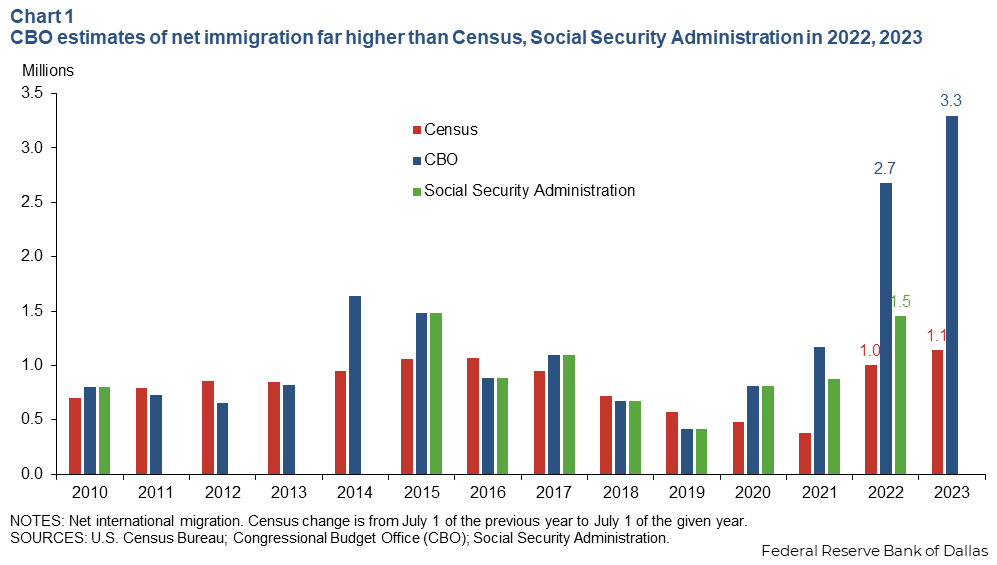Several observers have pointed out the gap between civilian employment as measured by the CPS and the nonfarm payroll employment figures obtained by the CES. The CPS measure includes new population controls, which depend on estimated immigration. The CBO estimates much higher net immigration than the census, which, when applied to employment, could change our view of employment.
From Orrenius et al. (2024).
Source: Orrenius et al./Dallas Federal Federation (2024).
In 2022-23, CBO estimates that there will be 3.9 million more net immigrants than in the census. Adding this figure to the 2021M07-23M06 population, using the same labor force participation rate and employment-to-labor force ratios as observed through 2023M06, gives the following picture.
Figure 1: Civilian employment as reported (bold orange), adjusted to add 3.8 million additional immigrants (pink). Using reported employment increase for 2023M07-06. Source: BLS, Dallas Fed, and author’s calculations.
This changes the picture of business cycle indicators, including alternative measures of employment:
Figure 2: Nonfarm Payrolls (NFP): Philadelphia Fed Early Benchmark (dark blue bold), CBO Immigration-Adjusted Civilian Employment (orange), Industrial Production (red), Personal Income excluding Current Transfers in Ch.2017$ (green bold), Manufacturing and Business Sales in Ch.2017$ (black), Consumption in Ch.2017$ (light blue) and Monthly GDP in Ch.2017$ (pink), GDO (blue bars), all log-normalized to 2023M04=0. Source: BLS via FRED, Federal Reserve, BEA 2024Q1 Third Release, S&P Global Markets Insights (née Macroeconomic Advisers, IHS Markit) (7/1/(version 2024) and author’s calculations.
Here is the image of the standard indicators, for comparison:
Figure 3: CES Nonfarm Employment (NFP) (bold blue), Civilian Employment (orange), Industrial Production (red), Personal Income excluding Current Transfers in Ch.2017$ (bold green), Manufacturing and Business Sales in Ch.2017$ (black), Consumption in Ch.2017$ (light blue) and Monthly GDP in Ch.2017$ (pink), GDP (blue bars), all log-normalized to 2023M04=0. Source: BLS via FRED, Federal Reserve, BEA 2024Q1 Third Release, S&P Global Markets Insights (née Macroeconomic Advisers, IHS Markit) (7/1/(version 2024) and author’s calculations.
It should be noted that the change in civilian employment does not have much effect since the indicator is normalized to 2023M04. Normalizing to an earlier date would significantly change the employment profile.






